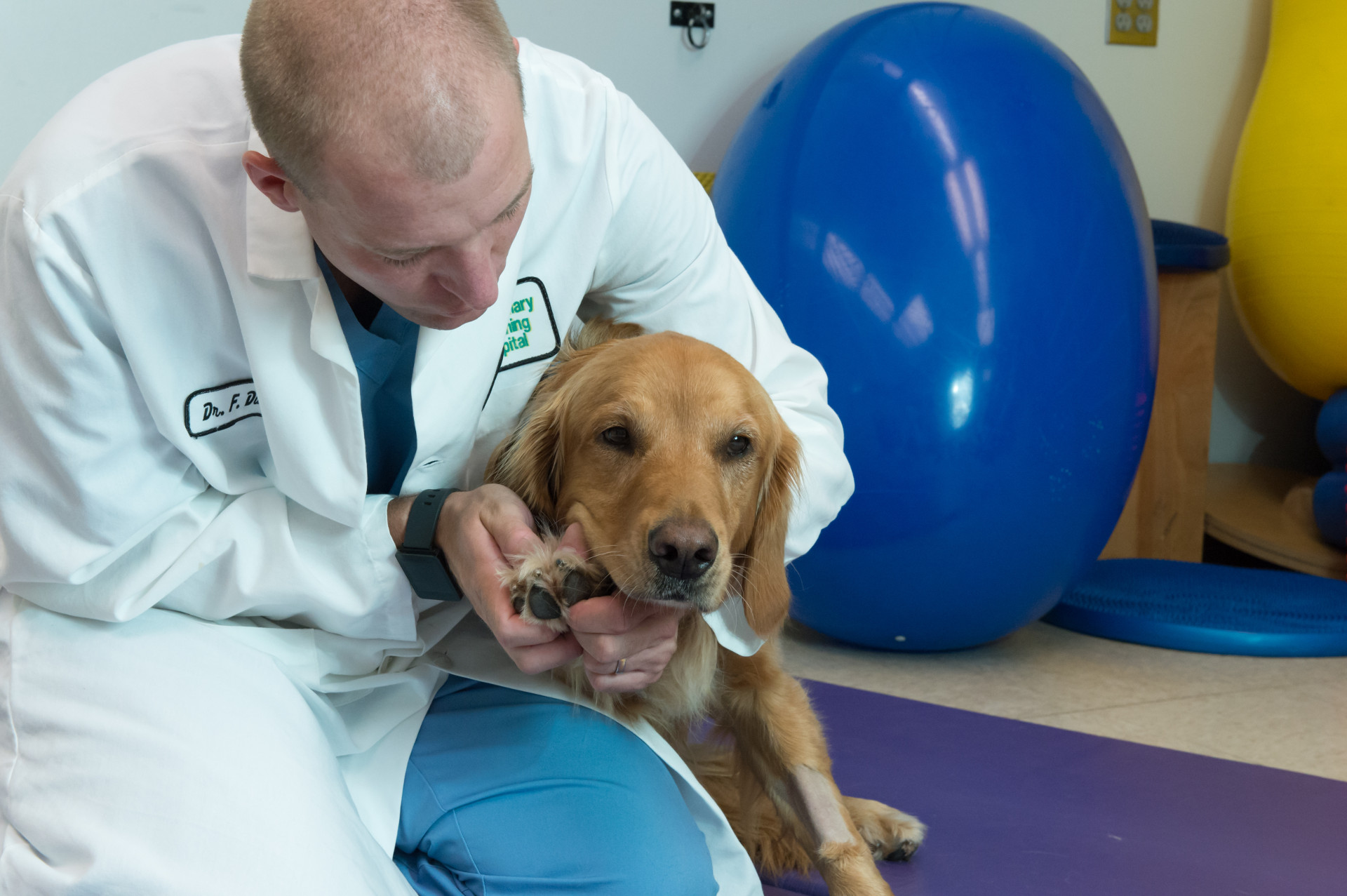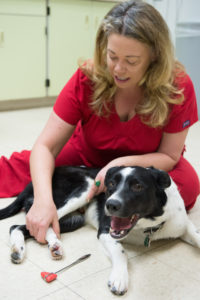
When considering how to treat their dog or cat, pet owners want options.
As veterinary medicine continues to evolve and understanding of different diseases increases, treatment options expand accordingly. In line with this evolution, the Orthopedics service at the James L. Voss Veterinary Teaching Hospital is introducing a dual focus for the treatment of musculoskeletal disease: non-surgical treatment candidates will see the Orthopedic Medicine and Mobility service, and animals that need surgery will see the Orthopedic Surgery service.

This change reflects the need for development of better alternative, non-surgical treatment of afflictions like arthritis and muscle and tendon tears. Through the leadership of Drs. Ross Palmer and Clara Goh, the hospital will retain expertise in orthopedic surgery, while also bolstering its offerings through the Orthopedic Medicine and Mobility service, led by Drs. Felix Duerr and Nic Lambrechts.
“We want to educate the owner, give them the pros and cons of all options including surgical and non-surgical treatments,” Duerr said. “We can help clients make informed decisions, and together we can decide what is best for their pet.”
Some people don’t want their older pets to go through surgery and recovery, and some animals may not be able to undergo anesthesia, for example, so Orthopedic Medicine and Mobility can offer alternative solutions. The new service names also clarify that treatments like physical therapy aren’t just for athletes or working animals – they can benefit all types of animals.
“We specialize in treatment of musculoskeletal disease, whether or not it’s caused by a sports injury,” Duerr said.
Focus on finding solutions
Veterinary students going into their clinical rotations this summer will also benefit from the change, as they’ll spend a week observing and practicing each service. They’ll learn how to accurately diagnose issues so they can provide feasible treatment options to clients. Surgery faculty and residents will have the opportunity to see more surgery-focused cases, while those on the non-surgical side can research better solutions to common problems like arthritis.
“Arthritis is one of those underestimated problems,” Duerr said. “It affects the quality of life of both people and animals, and we don’t have a solution for it.”
Research on treatments like supplements, stretching, or acupuncture on arthritis in humans can take years, but studying those effects in dogs takes much less time. Clinical trials with dogs provides a stepping stone toward developing alternative treatment options for people.
Expertise coupled with the new dual focus means the teams will have more time to spend on finding solutions to orthopedic medical issues. Veterinarians in both orthopedics services aim to offer more tailored, individualized options to owners and their pets – a route they hope more private and specialty practices will take in the future.
“I’m hopeful this will be a model others will follow,” Duerr said.
When your pet needs surgery
Drs. Ross Palmer and Clara Goh, leaders of the small animal Orthopedic Surgery service, understand that owners look for a caring team when their pet needs surgical treatment.
“We are pet owners ourselves, so we know that surgery and anesthesia can be scary for the family,” said Palmer. “We like to put our clients at ease by providing them with the same ‘high tech, high touch’ approach that we would use for our own family members.”
Many pets have been diagnosed by their primary care veterinarian with problems for which prompt surgical treatment is the desired course of action. Those patients can be referred directly to the small animal Orthopedic Surgery service.
Others may need further diagnostic evaluation to determine the best treatment options. Those patients will be seen by the Orthopedic Medicine & Mobility service.
If it becomes clear that surgical treatment is the best option, the client will bring their pet to meet with the Orthopedic Surgery service either as an internal referral consultation or as a separate appointment.
“We see this evolution as an exciting opportunity for our clients and referring veterinarians to tailor their referral experience to the specific needs and wishes of the pet owner,” said Goh. “This will give the orthopedic surgery team the opportunity to focus on first-class orthopedic surgical care for our patients and their families.”